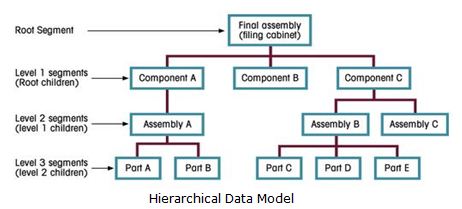Hierarchical Data Model in DBMS
The hierarchical model was developed in the 1960s to manage large amounts of data for complex manufacturing projects such as the Apollo rocket that landed on the moon in 1969.
Its basic logical structure is represented by an upside-down tree.
The hierarchical structure contains levels, or segments.
A segment is the equivalent of a file system’s record type.
Within the hierarchy, a higher layer is perceived as the parent of the segment directly beneath it, which is called the child.
The hierarchical model depicts a set of one-to-many (1:M) relationships between a parent and its children segments. (Each parent can have many children, but each child has only one parent.)

Hierarchical Data Model Advantages
The different advantages of Hierarchical Architecture are as follows:
Conceptual simplicity
Database security
Data independence
Database integrity
Efficiency dealing with a large database
Hierarchical Data Model Disadvantages:
The different disadvantages of Hierarchical Data Model are as follows:
Complex implementation
Difficult to manage
Lacks structural independence
Applications programming and use complexity
Implementation limitations
Lack of standards
You May interest in these Questions:
Relational Database Model in DBMS
The Entity Relationship Model in DBMS
The Object-Oriented (OO) Data Model in DBMS


